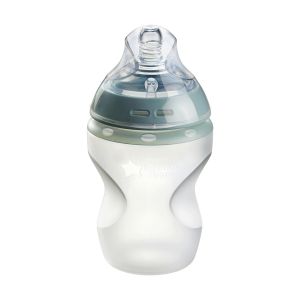
This is a demo store. No orders will be fulfilled.
Subscription orders can be cancelled at anytime. Standard delivery will be charged on each subscription order. Find out more about subscriptions.
They’re easy and fuss free
Your products are automatically sent to you
You save when you sign up for a subscription
You can cancel at any time
Don't yet know your areola from your elbow? No problem!
Here's a quick A-Z guide to the most common terms you'll hear when talking about all things breastfeeding.
Areola: The dark area of the breast around the nipple. Your areolas are pretty clever! They get darker when you're pregnant to help your baby find them.
Biological nursing: A laid back breastfeeding position that's useful for people with smaller breasts or who want to rest while breastfeeding.
Blocked milk ducts: Narrow tubes called mammary ducts carry breast milk from the segmented glands (lobules) in the breasts to the nipple. If one of the glands isn't drained properly as a baby feeds, the milk can't flow through easily, and the ducts can become blocked.
Cluster feeding: Don't worry, this isn't you feeding lots of babies at once! It's when a baby feeds very frequently or even continuously for a few hours. Commonly linked to growth spurts or developmental leaps, these feeding frenzies are nothing to do with a drop in your milk supply (a common concern for mums). So grab that remote, snuggle down and enjoy the peace.
Colostrum: This is your baby's first meal from your breast, produced by your body in the first three days or so after the birth. It's yellow, creamy, and rich in nutrients.
Engorgement: This is when your breasts seem to swell and feel very full as your milk 'comes in'. They will settle down, but it can feel very strange and a bit sore!
Extended breastfeeding: When a little one breastfeeds beyond the age of one.
Feeding on demand: This simply means not worrying about the clock. You feed your baby whenever they show you that they are hungry. Common ways your baby will show you this include licking their lips, sticking out their tongue, rooting around, sucking on their hands or, of course, crying.
Foremilk: The first milk released during every feed. If you think of breastfeeding as a three course meal, then this is the soup course. It's the more watery, thirst-quenching part of the feed.
Galactagogues: Foods that may help to increase your breast milk supply.
Hindmilk: Once the milk is flowing nicely, it is time for dessert as this creamier, fattier milk is released. Richer and more sustaining, your baby gets their calories from this.
Kangaroo care: A unique bonding experience of holding a baby with skin-to-skin contact, usually snuggled inside your shirt or wrap much like a kangaroo's pouch. It's proven to stimulate feeding, stabilise a baby's heart rate and create a sense of closeness and wellbeing.
Latching on: This is the way your baby takes your breast into their mouth to feed. You'll hear this phrase a lot in the beginning. A good latch means the baby has a good seal around the nipple and can feed well. It also makes it less painful for you and we're all for that.
Let down pains or after pains: You may be forgiven for thinking your hard working uterus has done its job, but it has one more task to do, namely contracting back to its original size. For many women this feels like menstrual cramps, and they can be more painful during breastfeeding.
Let down reflex: Another clever design from Mother Nature, this is when your body receives a message (usually your baby's sucking) to release milk from your breasts. Many mums say it feels a bit like pins-and-needles, which is the feeling as the milk makes its way from the ducts.
Mastitis: Sometimes milk ducts get blocked, and if they're not cleared this can lead to a very painful inflammation of the breast tissue known as mastitis. You may have flu like symptoms as well as a hot, lumpy, and painful breast. You'll need to seek some medical advice if you experience this.
Oxytocin: The 'love' or 'feel good' hormone that's released when you breastfeed.
Rooting: The natural instinct of a newborn to try to seek out the breast. You baby will snuffle around your chest looking for lunch. Especially amusing when the baby is not being held by its mum!